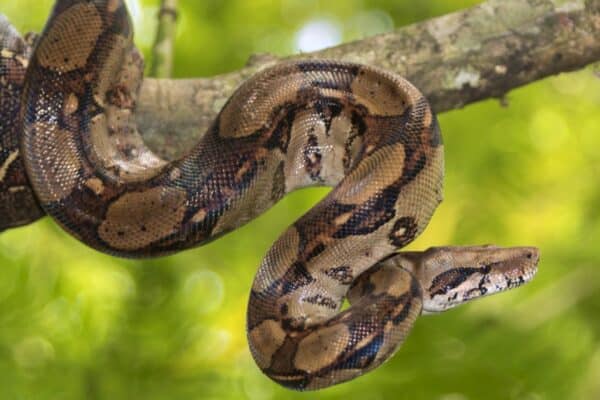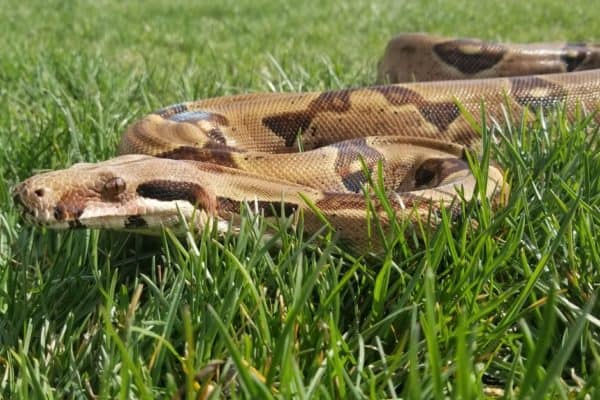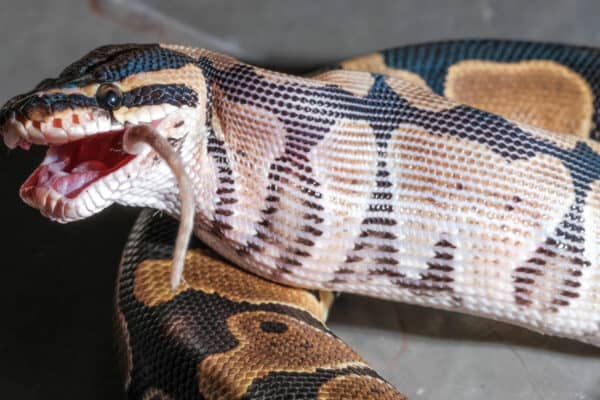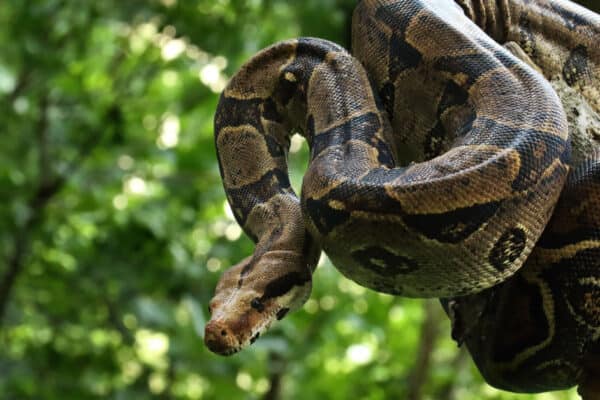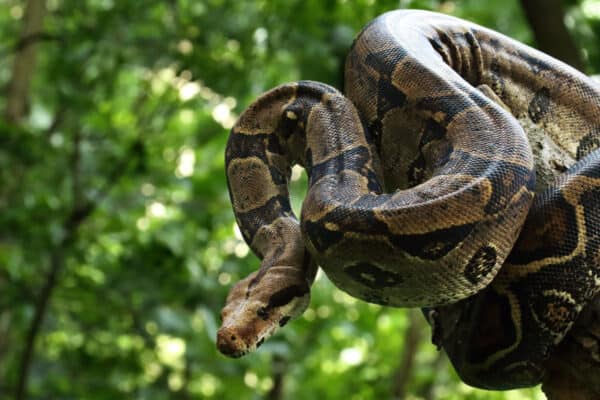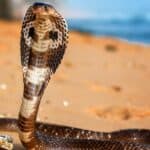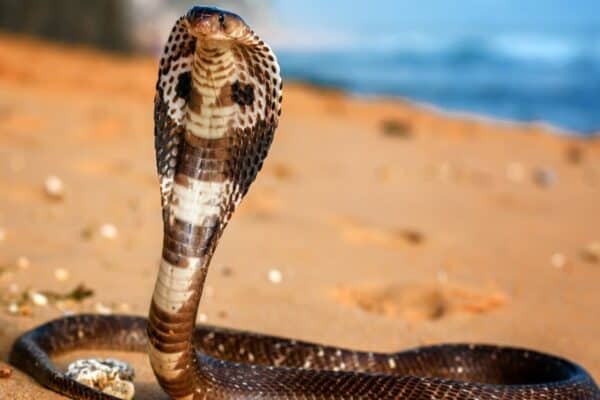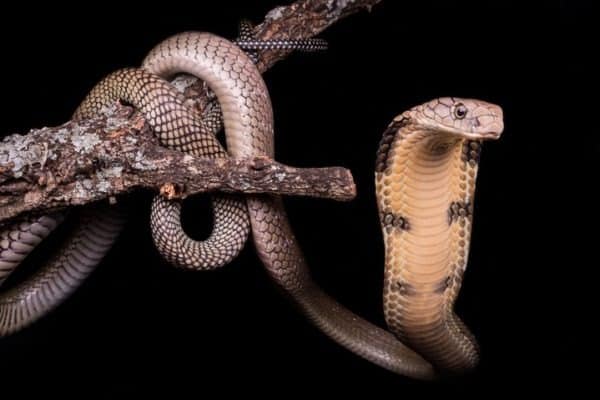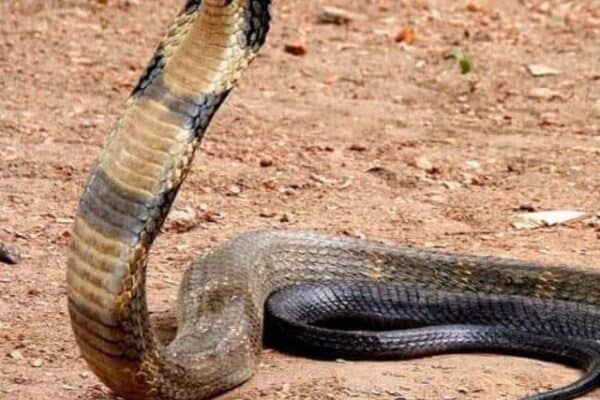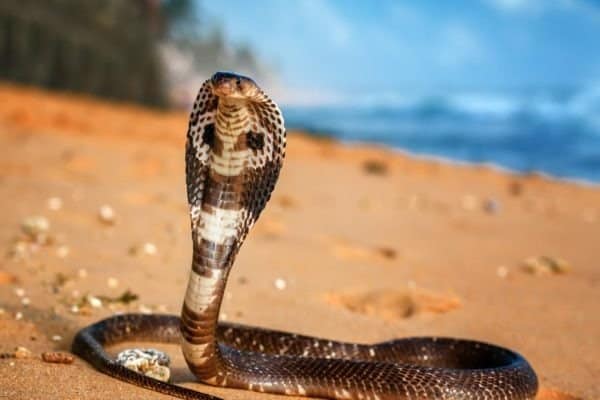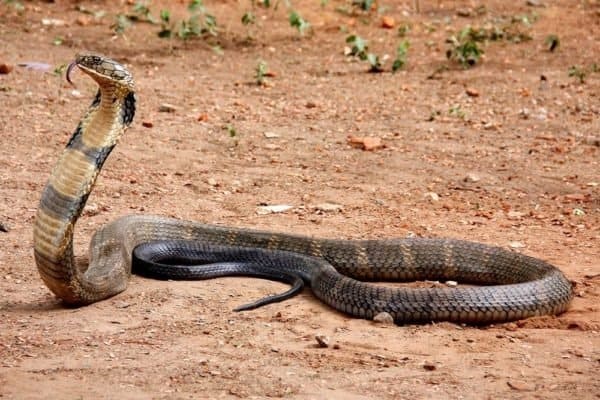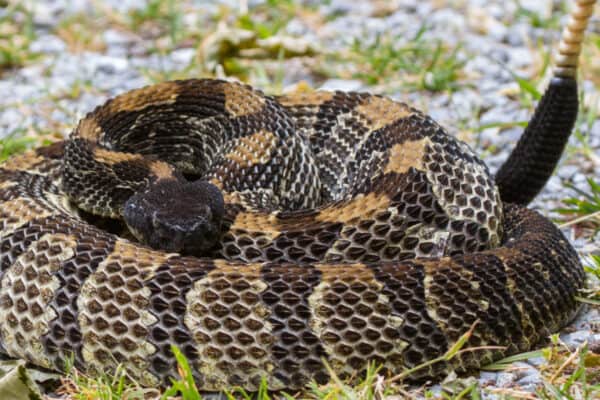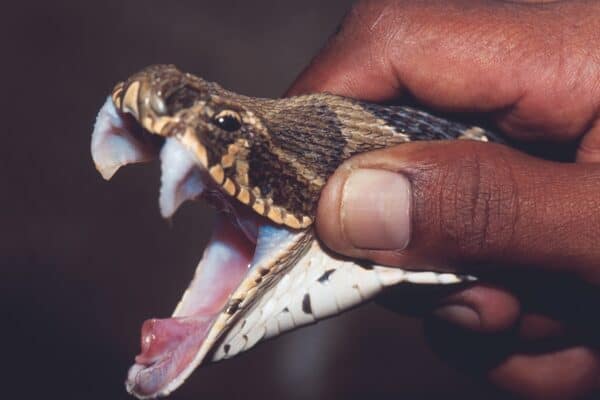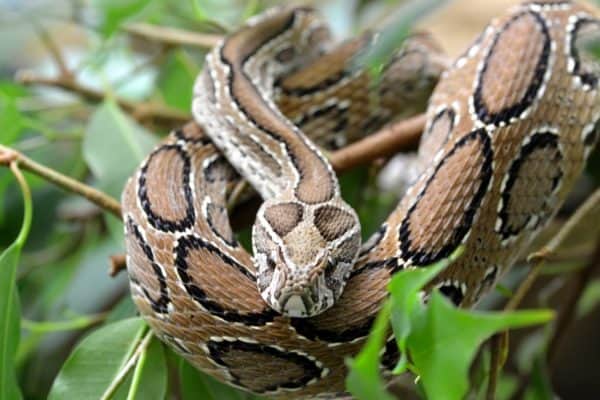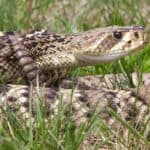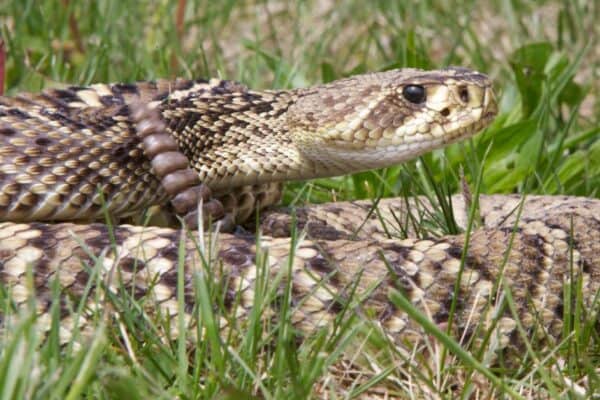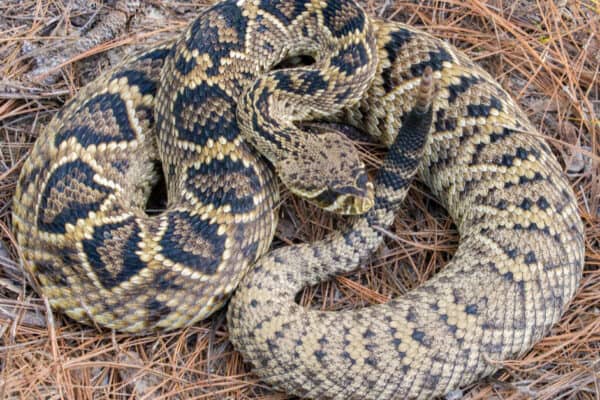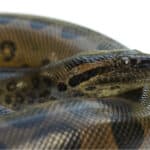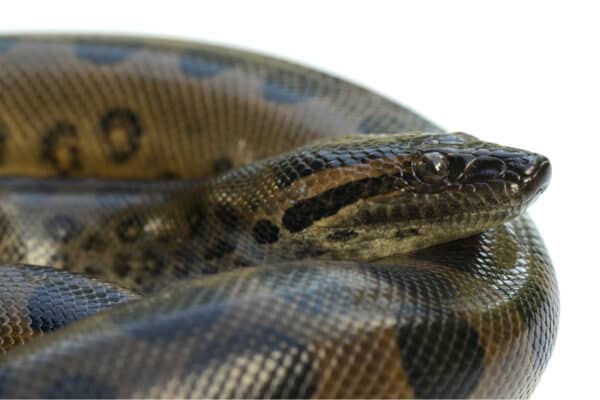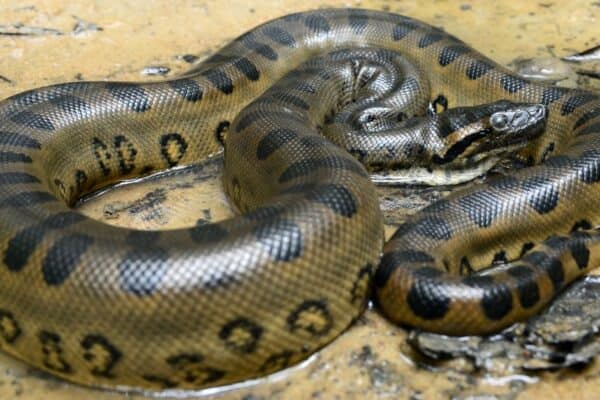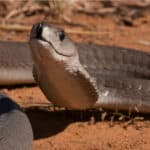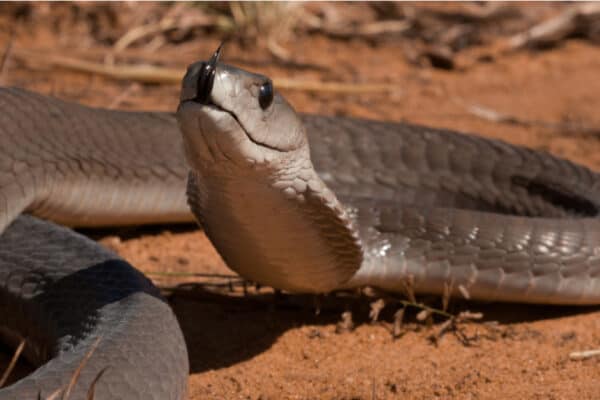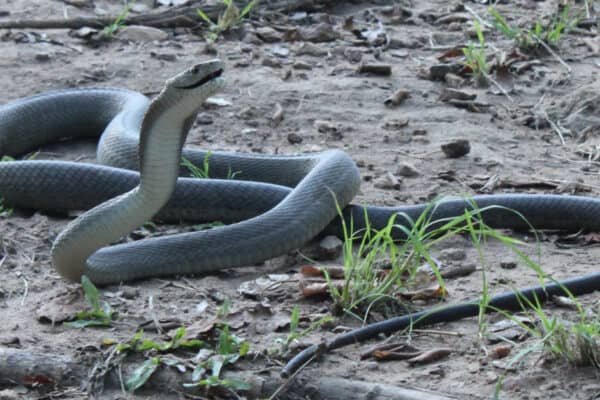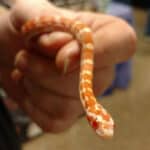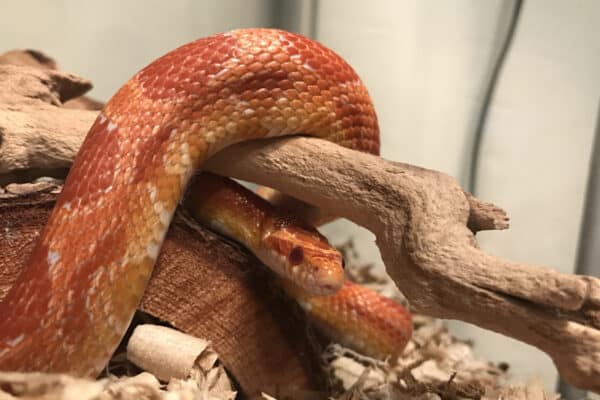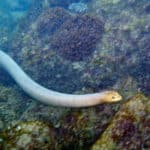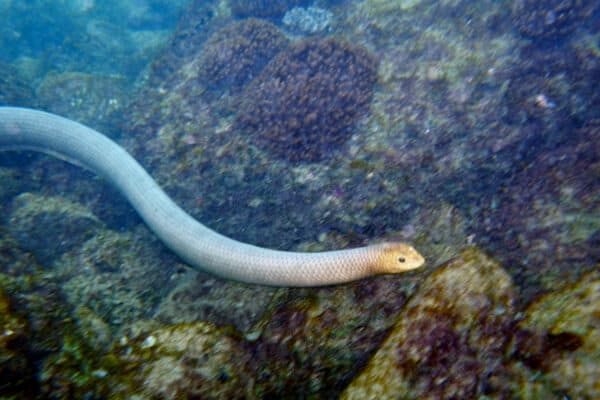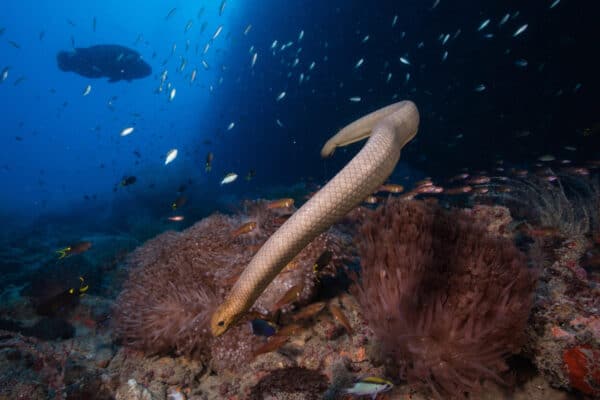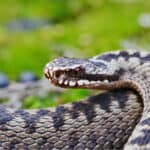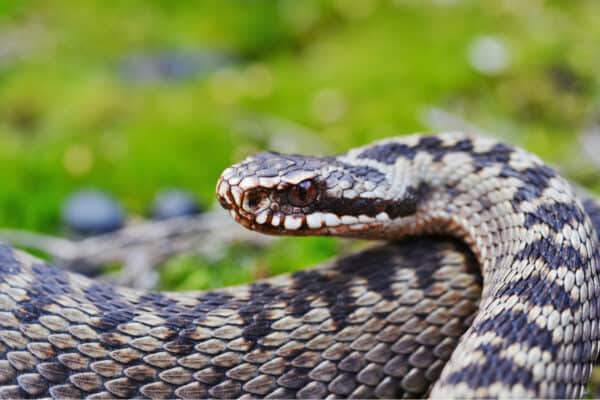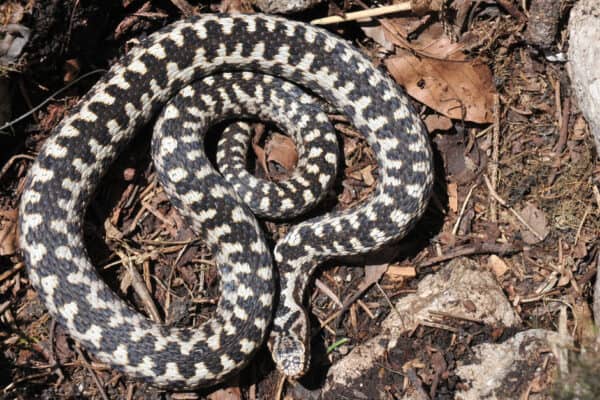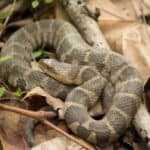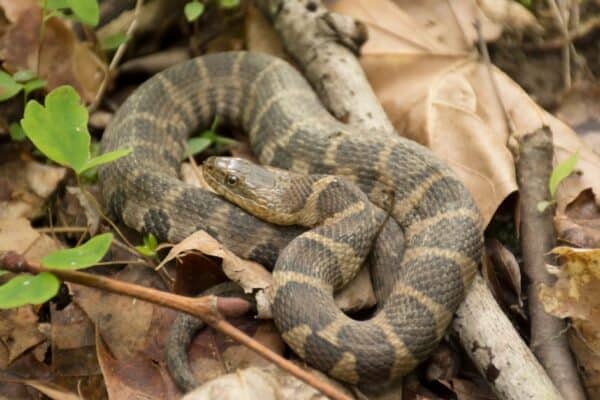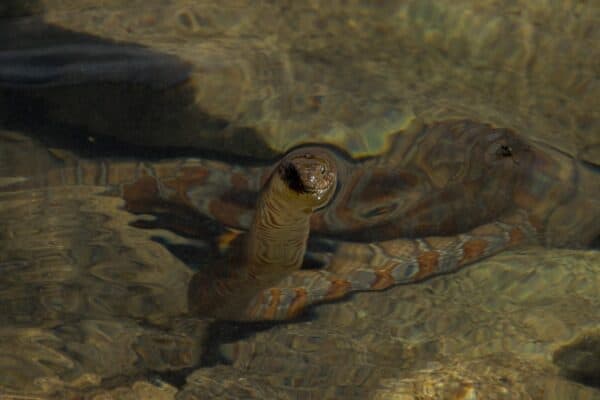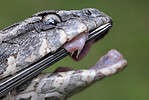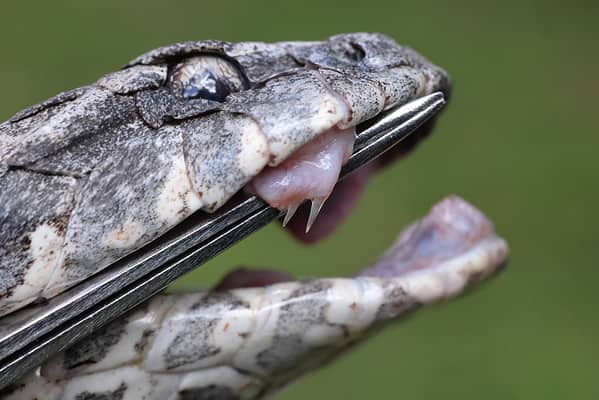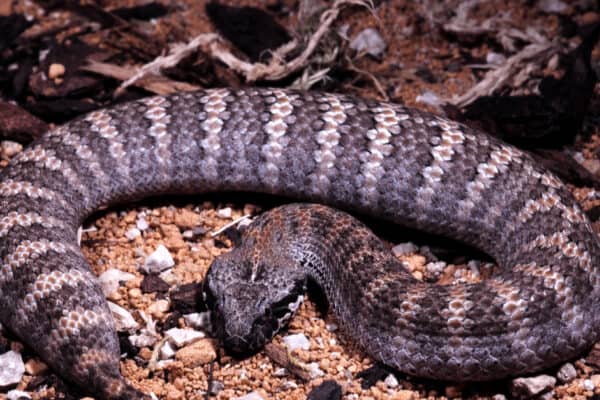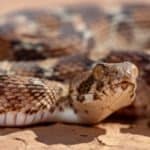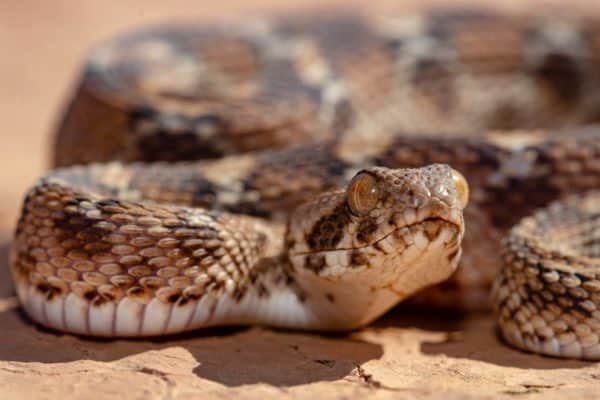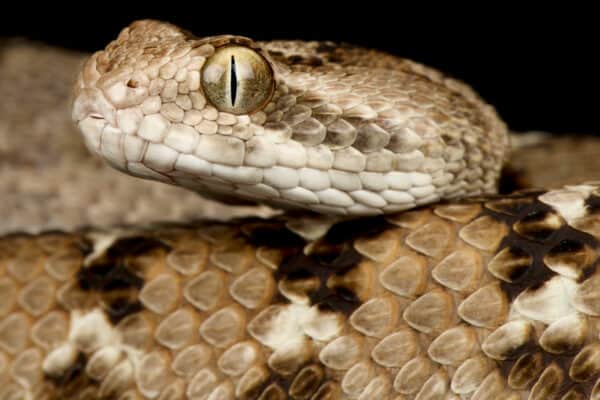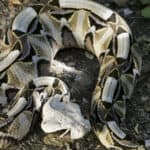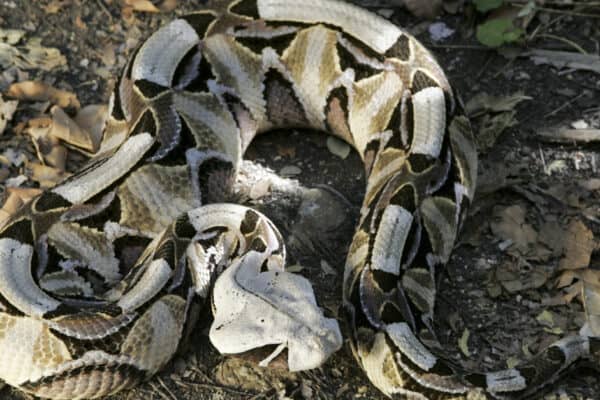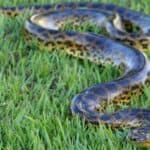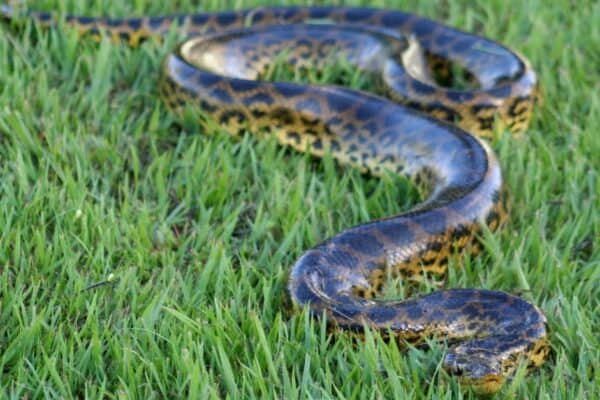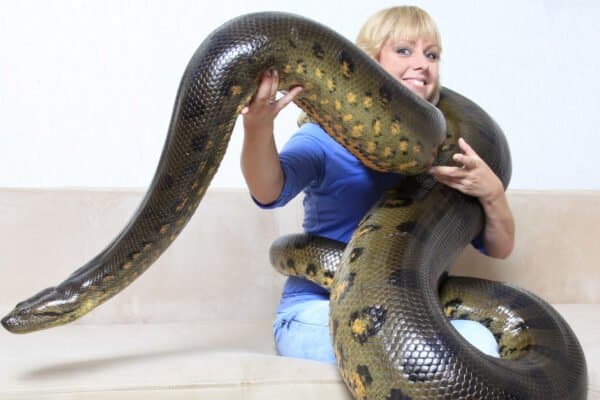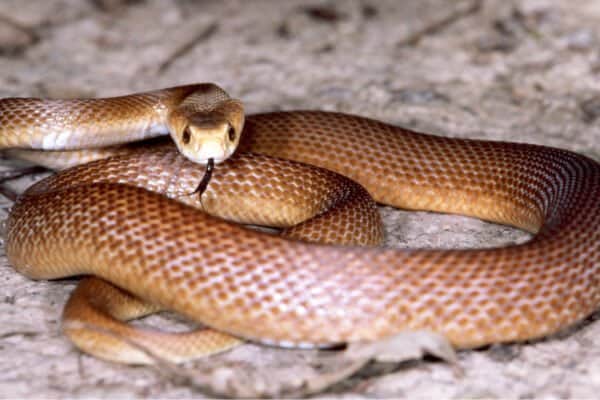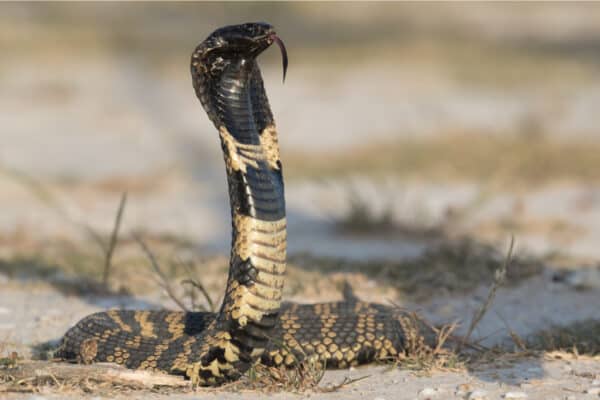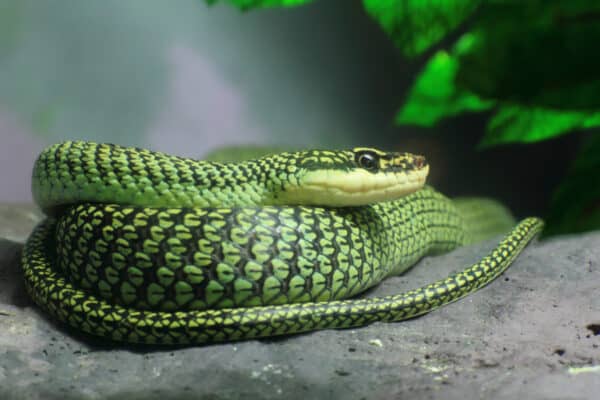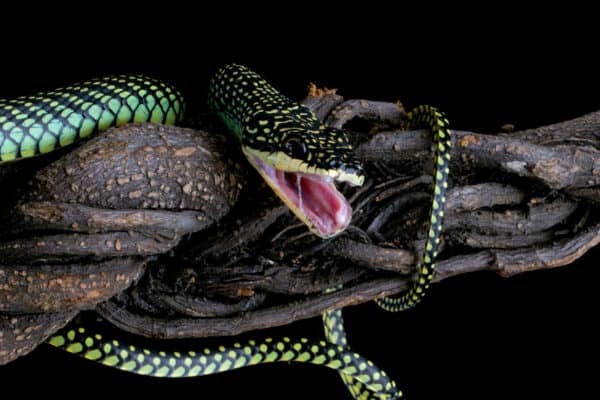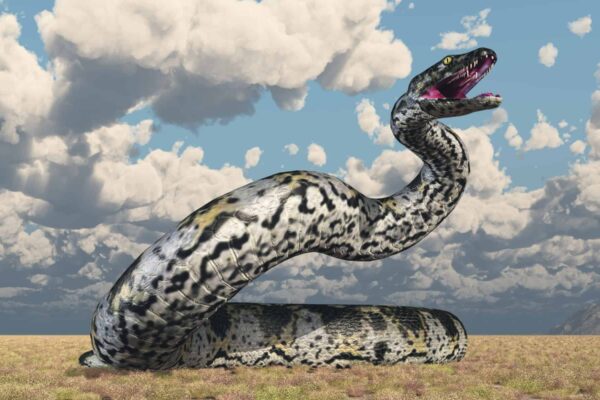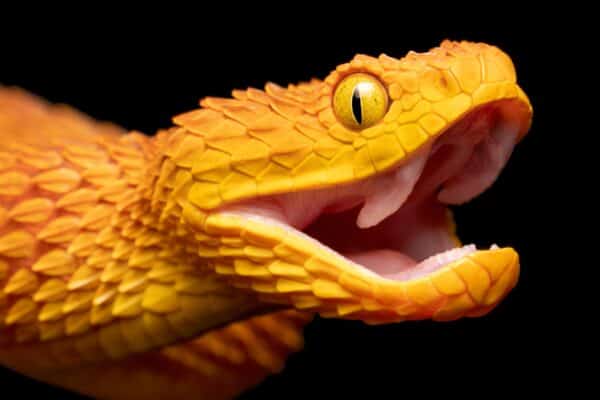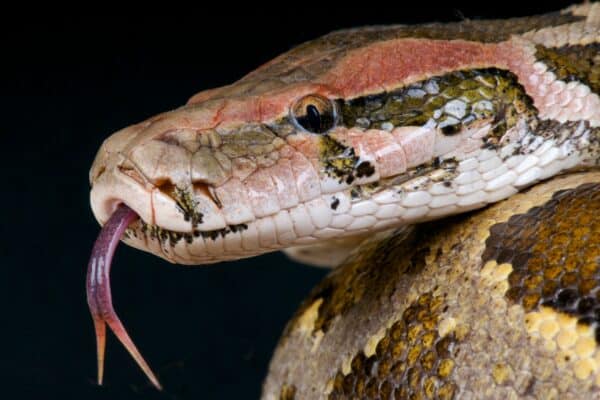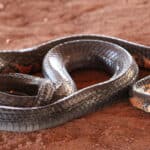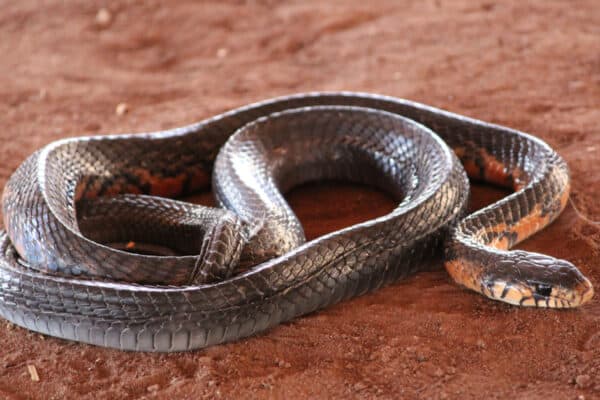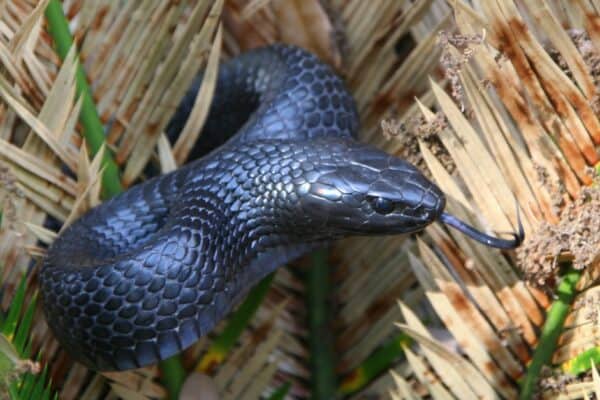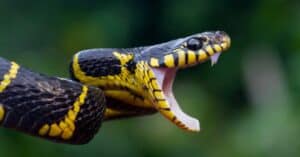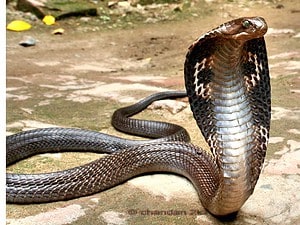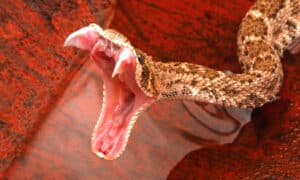Key Points:
- The Black Mamba has the fastest-acting venom of any snake. A human can die of its bite within 20 minutes.
- The Amazon is the most biologically diverse rainforest, and home to the largest snakes on Earth.
- Snakes are cold-blooded animals which can’t withstand temperatures that stay below 65 degrees Fahrenheit. Snakes usually don’t venture into very cold regions like the Arctic Circle.
Snakes That Kill Without Venom
Some snakes do not have venom but use their constricting muscles to kill their prey. They wrap their bodies around their prey, squeezing tighter and tighter until their prey cannot breathe anymore and dies. One of these snakes is shown below.
Snakes That Kill Other Snakes
Some snakes will also eat other snakes. One of them, whose scientific name actually means “snake eating”, is also the longest venomous snake in the world.
Snakes That Live In Deserts
There are lots of snakes that live in deserts. They are well-adapted to living here because snakes only need to eat once every few weeks and they all have the ability to conserve water.
Big Four Snakes
India is home to nearly 300 different snakes of which only about 60 of them are venomous. Nevertheless, every year about 58 000 people die in India from snake bites. The “Big Four” snakes are the most dangerous snakes found in India today.
Venomous Snakes in the USA
The United States has approximately 30 species of venomous snakes. This includes rattlesnakes, coral snakes, cottonmouth, and copperhead snakes. They are responsible for about 5 deaths each year. Arizona is the state with the most venomous snakes.
Snakes in the Amazon
The Amazon is the largest rainforest on earth and is home to some of the largest snakes on the planet! The Amazon is the most biologically diverse rainforest on earth but is also the one that is most threatened by deforestation.
Fastest Acting Venom
The Black Mamba has the fastest-acting venom of any snake. They will usually inject about 280 mg of venom when they attack, while only 15-20 mg can be fatal. If untreated, the bite will kill a person within 20 minutes.
Pet Snakes
If you want to keep a pet snake, it is important to choose a snake that will fit your unique circumstances and capabilities. A snake is a big commitment. Most snakes live for more than ten years in captivity. A snake should also have the correct habitat, mimicking the snake’s natural habitat.
Sea Snakes
Sea Snakes are, apart from whales, the most aquatic air-breathing Vertebrates. In fact, they must surface regularly to breathe. They all have flattened bodies with short, oarlike tails and are often confused with eels.
Snakes in the Cold
Snakes are cold-blooded animals and cannot control their own body temperature. Snakes cannot survive temperatures of under 65° degrees Fahrenheit (18°C). There are therefore not many snakes that will survive in countries close to the Arctic circle.
Snakes Giving Birth
Snakes can give birth in three ways – laying eggs, giving live birth, or the soft-shelled eggs develop inside the mother and the snakelets are born live. The most common type of birth is laying eggs, with only about 20 to 30% of all snakes giving live birth.
Fastest Snake
Most snakes can move very fast, but they will not be able to catch a human running. Even the quickest snakes don’t move more than 18 miles per hour. You cannot, however, avoid its strike.
Vipers
Vipers are venomous snakes found all over the world, except for Australia and some islands. They all have long, hinged fangs at the front of their mouths that they use to inject venom into their prey. The Viper family includes some of the deadliest snakes.
The Snake’s Fangs
The fangs of a snake operate almost like a syringe. The fangs are also long and thin, hollow, and with a beveled tip. The snake uses its fangs to inject venom into its prey, killing or paralyzing it so that the snake can swallow the prey. Fangs range from very small to 2 inches long.
How Does a Snake Swallow
A snake has loosely hinged jaws, that can expand to swallow prey that is much larger than their mouths and even bodies. The mandibles are loosely connected at the back of the skull with ligaments, that is why they can open their mouth so wide, they do not dislocate their jaws to swallow! Some snakes can even eat prey the size of humans.
A Snake’s Venom
A snake’s venom is highly toxic saliva that contains zootoxins. This helps the snake to immobilize and digest the prey. The snake injects the venom with its fangs during a bite. Some species are also able to spit venom.
Snakes that Fly
In Southeast Asia, there live snakes that can glide through the air from up a tree. They do this by curving their bodies into a C-shape and flattening the body. They also use a lateral undulation motion to glide through the air. They can glide for up to 100m, making them better gliders than flying squirrels.
Pre-historic Snakes
The largest known member of the suborder Serpentes lived during the Paleocene Epoch (66 million to 56 million years ago). This snake is estimated to be up to 50 feet long and 3 feet wide, making it 3 times as big as a giant anaconda.
How Do Snakes Smell
Snakes do have nostrils, but they use a special organ in the roof of their mouths to smell. They use their tongues to pick up smells from the environment. Snakes have a very well-developed sense of smell.
Large Snakes in the US
There are a lot of very large snakes in the USA. Some of these snakes are native, but one also gets snakes that came here from other parts of the world. The biggest of these is the green Anaconda, which is found in parts of Florida.




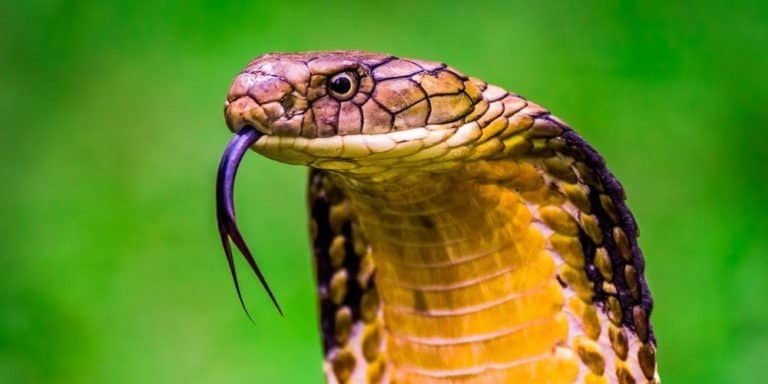


 New Africa/Shutterstock.com
New Africa/Shutterstock.com